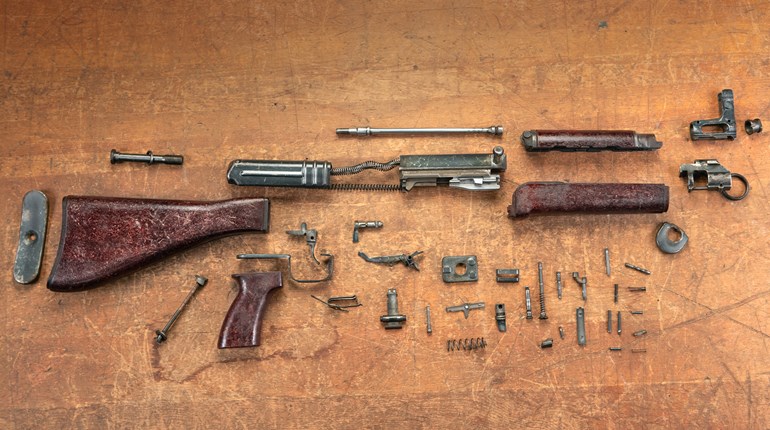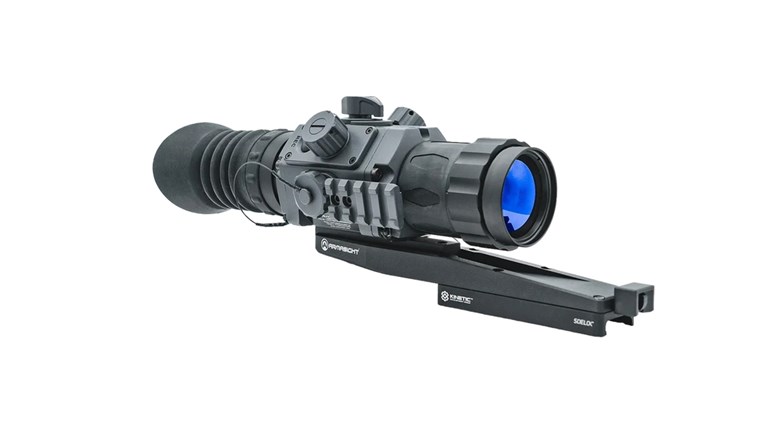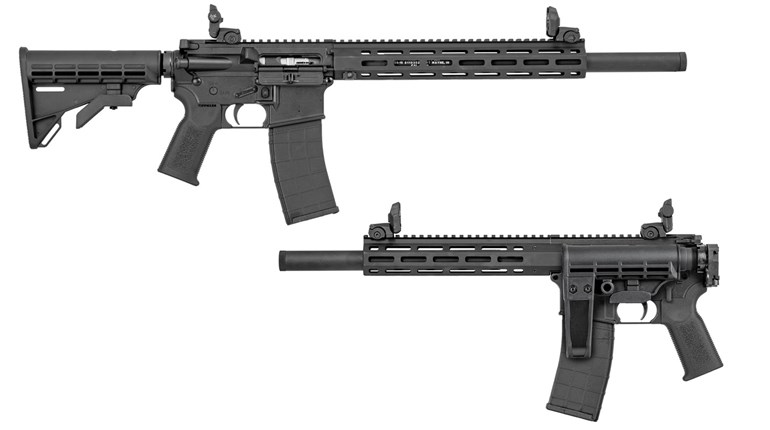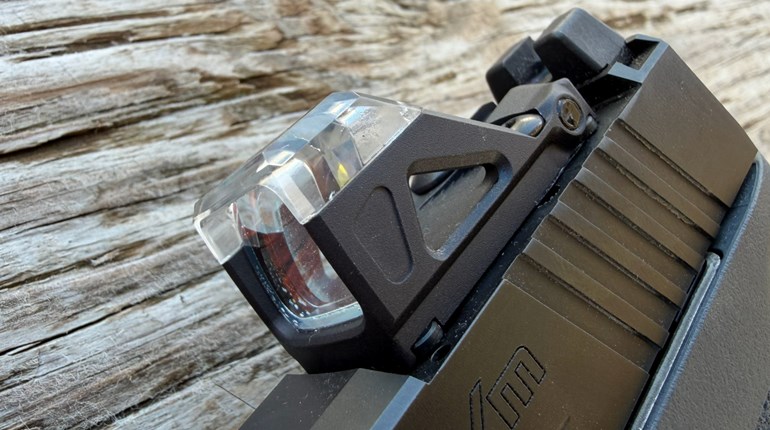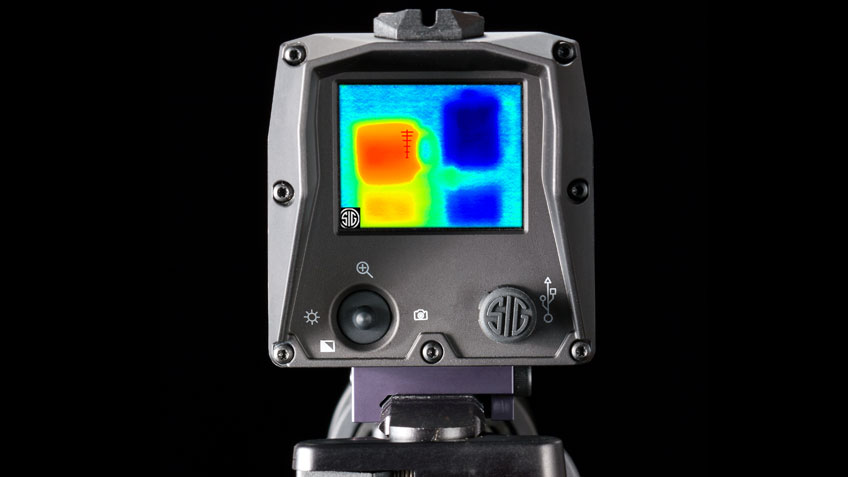
A little more than 15 years ago, my sniper team was perched atop a high mountain ridge, looking down over hills and valleys full of bad guys we had been battling for a week. On this particular day, our side had been harassed by a mortar position that no one could seem to find. Our indigenous allies in one valley eventually stalled, announcing they were not going any farther until the mortar was silenced.
One of our sister teams was picking its way through a different valley, trying to get closer to a key target, when they came under heavy fire from both small arms and the mortar in question. The enemy ambushers were well out of range of my team’s rifles, but thanks to a brand-new hand-held thermal optic, they were no longer out of sight. This high-end, cooled unit far surpassed previous thermal imagers and was capable of seeing human-size heat signatures several thousand meters away, so the muzzle flash of an 82 mm mortar was easy pickings.
As soon as it began lobbing rounds after nightfall, one of my team members found it with the thermal optic—something our conventional night-vision devices failed to do under the conditions. We quickly went into high gear, communicating with the team in contact, directing close air-support assets above and a quick-reaction force down below, manning the thermal imager and using conventional night-vision devices to mark and eliminate the mortar team with a single high-explosive round sent down from 20,000 feet above us.
Three things happened simultaneously in that moment: Our sister team had one less obstacle to fight through, our allied force immediately began attacking in the right direction and our faith in the use of portable thermal optics in battle was forever set in stone.
The 1990s-era hand-held thermal imagers to which I was first exposed in the Army were functional, but they could not withstand the rigors of combat—especially at snowy, 10,000-foot elevations. By the time I retired in 2008, several combat-ready, rifle-mounted thermals were being issued to various parts of the Special Operations community. I am hopeful things are even better today, both in terms of technology and in distribution amongst troops. That is certainly true in the commercial market, where increasingly affordable thermal optics are rapidly becoming available for a variety of needs.
Conventional night-vision devices—commonly referred to as “Image Intensified” or “I2”—amplify ambient light in both the visible and the infrared spectrums. Military forces, law enforcement personnel and civilians have enjoyed their benefits for decades. I2 devices work great, so long as they have moonlight, starlight or an artificial white or IR light source. But they are nearly worthless in rain, fog, smoke or low-ambient-light conditions. Thermals can detect heat sources day and night and in conditions that render I2 devices useless. They are used in military applications for everything from missile-guidance systems to individual carbine sights.
But the utility of today’s thermal optics goes far beyond the business of war. Firefighters use them to look for hot spots and trapped victims. Search parties and aircraft use them to find missing people. Thermal imagers help locate heating and cooling inefficiencies in structural applications. Hunters use them to spot night-legal critters and security-minded folks employ thermals to watch outer perimeters.

Heat-sensing optics do their best work at night. Ambient temperatures drop as the sun goes down, causing inanimate objects to cool while living things remain warm. In winter, the temperature of sun-warmed objects wanes quickly, so people and animals stand out starkly against colder objects. Summertime is a different story, though, as trees and rocks retain absorbed heat well into the night. The best thermals are internally cooled to amplify temperature differences. Resolution of these units is excellent and they make long-range identification and targeting possible at night. Unfortunately, cooled thermals are priced well beyond most budgets. The good news is uncooled units can now be had for as little as a few hundred dollars. These simpler devices do not have the same observation or targeting capabilities as cooled units, but they startup within seconds, run silently and sip their batteries in comparison to high-end models.
Tech-No
Much of the technical jargon used to describe thermal-imaging devices is confusing, especially for someone like myself whose post-secondary education was obtained with a rucksack on his back. I could write a dissertation on “Bugs as a Constant Companion” or give lectures on the many faces of jungle rot. But the mere mention of vanadium-oxide (VOX) microbolometers or barium-strontium titanate (BST) sensors numbs my brain to the point of incapacitation. While I have a basic understanding, I am not qualified to explain the different sensor technologies used in modern, commercial thermal-imaging devices. Important to note are that current applications of this technology have shrunk thermals down to usable sizes and brought prices into the somewhat affordable range.
Some key features to look for when shopping for an uncooled thermal system are the display resolution (in pixels), the refresh rate (in hertz) and power sources/consumption rates. Higher pixel counts allow easier discernment of images. Faster refresh rates mean the display updates its image more times per second, which is particularly useful when moving. Image and reticle focus are also key features to research.
I recently evaluated three new additions to the commercial thermal-imaging market consisting of one hand-held and two long-gun-mounted units. These imagers represent the low to middle portions of the cost spectrum and are designed for a variety of uses.
Thermal-imaging devices provide users with excellent capabilities not found in other limited-visibility gear, but they have limitations, too. Thermals do not “see” through glass unless a heat source is close enough to warm the glass. On warm nights and in densely vegetated areas, natural foliage and trees retain enough heat to make finding warm people or animals difficult. Image focus must be adjusted for even slight changes in distance to the target or object. The better thermal imagers are at presenting clear, usable images, the more they cost and the faster they drain batteries. Thermals are best used in tandem with traditional night vision gear in tactical environments, but they are functional as stand-alone viewers in less-threatening situations. Whether searching for downed game after last light, guarding against four-legged trouble around a camp, night hunting for predators or checking to see where your house needs more insulation, there is a commercial-grade thermal imager that will fit the bill without necessitating a bank loan.

FLIR Scout TK
FLIR Systems has extensive experience in the thermal-imaging industry, and that is exemplified through an equally vast product list. I’ve benefitted from FLIR products across the full-cost spectrum, from night hunting to long-range sniper work to getting help from close air-support assets during running gunfights. FLIR is a natural to adapt its proven technologies to the commercial market. The Scout family is primarily marketed toward the hunting and sporting communities and, at the time of this writing, includes five models. The Scout TK is a truly pocket-size, hand-held unit. Startup time for my test sample was about 3 seconds, and a rubber eyecup eliminates any chances of light reflection off the user’s face at night, which is an important nighttime security consideration. Image clarity was good thanks to high resolution and an easy-to-operate manual focus knob. The advertised detection range for a man-size warm object is 100 yards. I was able to clearly identify a pair of 2-inch-square chemical heaters at 75 yards, and I could just barely make them out at 100 yards so I am guessing the actual detection range for people is a bit farther than claimed.
The TK is very light and simple to use. Four rubberized mash buttons along the top allow you to power it on or off, select from eight different color palettes, capture video or pictures and control brightness. The display screen guides you through menu options easily. A built-in USB interface is designed to allow video and picture viewing and transfer, but I could not get my test sample to work with the Windows 8.1 OS (I gave up after the third hard restart). Fortunately, you can review and delete your images on the Scout’s display screen, too. The Scout TK uses an internal battery that must be charged via the included USB adapter. I think this is a handicap for a field device, but it probably helps reduce the unit’s size. This imager is priced right for a functional heat-detection device. The slow refresh rate makes it difficult to use for anything except static viewing, but it works well at modest distances and would be a welcome addition to any home-defense plan or hunt camp.
Specifications
Dimensions: 6x2x2 inches
Weight: 6 ounces
Power: Internal/rechargeable lithium-ion; 5-hour projected runtime
Refresh/Frame Rate: 9 hertz
Resolution: 640x480 pixels
Magnification: 1X
MSRP: $599

SIG Sauer Electro-Optics Echo 1
After SIG Sauer’s bold jump into the electro-optics market, I am not surprised the company branched out into the thermal arena, too. The Echo 1 represents its first—but probably not last—foray into limited-visibility optics. Designed to be mounted on a firearm, the Echo 1 is larger than a reflex sight and was the most expensive optic I tested. It fits standard Picatinny-type rails using a hex-head crossbolt, so it is probably best left on a dedicated firearm to avoid zero shifts that result from continuously installing and removing sights.
A front-mounted manual-focus ring made fine-tuning of the images possible, but I found the adjuster’s forward location awkward when my rifle was shouldered. While the image quality was excellent, I was unable to focus my eye on any of the five reticle choices. I had to mount it near the forward end of my carbine’s 13-inch ALG Defense EMR handguard, making my suppressed rifle quite front-heavy. I have no trouble with red-dot optics or illuminated riflescope reticles, so it seems some means of reticle focus would be helpful on the Echo 1.
The Echo 1 has a digital 2X zoom function that was particularly useful to me, as it doubled the reticle size along with that of the image. SIG Sauer has a nifty web-based reticle-design tool that should allow users to download a custom reticle to their Echo 1. The Echo’s refresh rate was better than the Scout’s, but it is still too slow for use outside of static targeting. It may look like a reflex-type sight, but there is no way I would recommend it for any fast-moving or dangerous targets. On-screen menus are easy to toggle through and I was able to boresight and zero the optic at night in two rounds on a 12x24-inch target bracketed by a set of hand warmers at 100 yards. I do not recall ever having zeroed a rifle-mounted thermal sight that easily.
Included with the thermal sight is a USB adapter that allows shooters to review all pictures and videos taken while observing or shooting, and this worked great for me. SIG Sauer includes a small notch-type sight that attaches to the Echo 1 for emergency use, as well as a mounting plate for micro-type reflex sights. As I neared the end of my test, the Echo 1 began shutting off immediately after I powered it up. A change to fresh batteries did not fix the problem.
Specifications
Dimensions: 4.3x2.6x2.7 inches
Weight: 14.7 ounces
Power: Two CR123 batteries; 8-hour projected runtime
Refresh/Frame Rate: 30 hertz
Resolution: 220x176 pixels
Magnification: 1-2X
MSRP: $3,124.99 (current street price is $2,499.99)

Torrey Pines Logic T12W
The first time I spied this tiny reflex-type thermal sight in a catalogue, I began making arrangements to try one out. The unit is astoundingly small and light. Unfortunately, that means the physical display dimensions—literally smaller than a postage stamp—make it very hard to see the non-magnified target image. I was unable to safely live-fire test the T12W, because I could not positively identify anything beyond hot spots in the display image farther than 10 yards away. I went through the limited adjustments available and tried all reticle and image-color options to no avail. Here, again, my need for reading glasses may have been a factor, but it seems that zoom and focus functions would help any shooter. TPL offers four T12 models, as well as other thermal sights in the “T” series. The T12W has the second-narrowest field-of-view and is advertised as allowing the user to see hog-size animal at 100 yards, but I could not verify the capability.
This imager’s refresh rate is good, but as with the SIG Echo 1, it is not fast enough to allow any panning or use on moving objects. The T12’s two side-mounted mash buttons control power and menu options, including zeroing one of the pre-programmed reticles. The menu has to be re-entered each time a zero adjustment is needed, so this could be a tedious process. The sight mounts to common rail systems via a quick-release mount, but also has a ¼-20 tpi threaded tripod adapter. A pistol grip is included in case you want to use it in hand-held mode. I tried this setup at arm’s length and still could not make out any image clearly enough to identify it. No ability to slave the image to an external screen exists. Overall, I would rate the T12W as a neat little package that is unsuitable for anything beyond close-range shooting at non-threatening targets by people with excellent near vision.
Specifications
Dimensions: 2x1.8x1.5 inches
Weight: 2.25 ounces
Power: One CR123 battery; 8-hour projected runtime
Refresh Rate: 30 hertz
Resolution: 60x80 pixels
Magnification: 1X
MSRP: $899 (current street price is $875)












